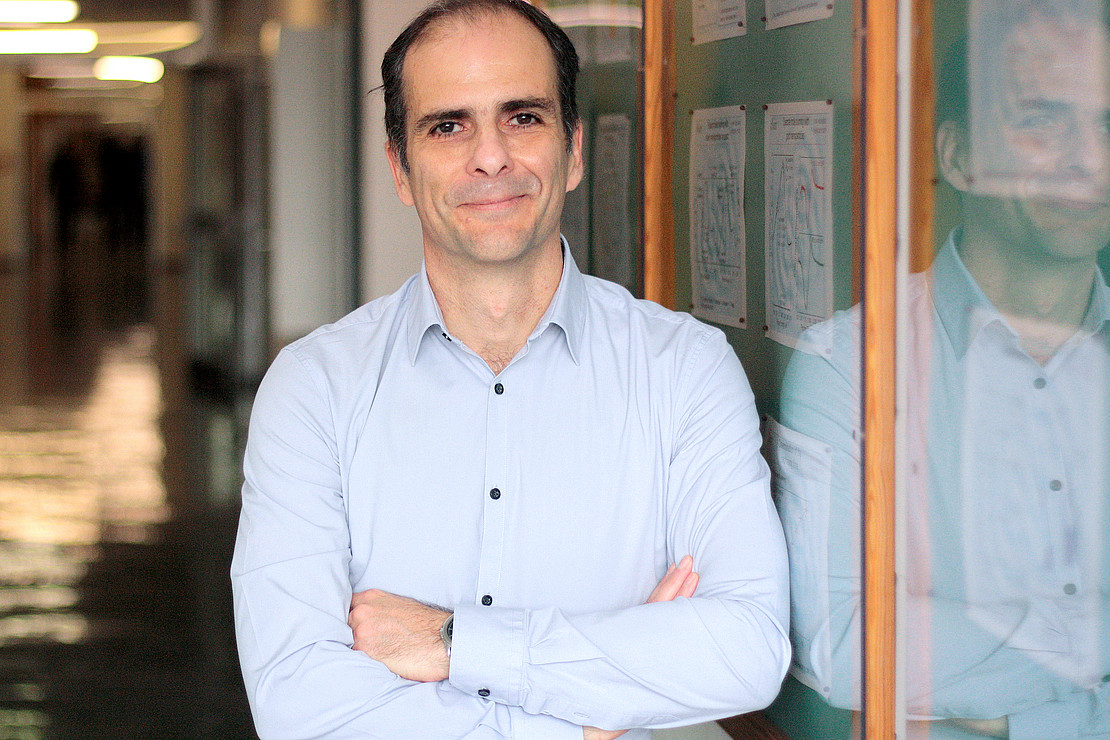Physical model: low electrical voltage against corona viruses
 Image: University of Kassel.
Image: University of Kassel.The so-called spike protein on the outer cell membrane of the corona virus is essential for its ability to infect the host cell. The spike protein binds specifically to a receptor called ACE2 on the surface of human cells. The virus can then fuse with the cell membrane, release its genetic material into the cell interior and continue to multiply. This is why the spike protein is a target for therapies and vaccinations. A research team led by Prof. Dr. Martin Garcia of the University of Kassel has developed a new approach based on a purely physical method to inactivate the virus. "Our computer simulations show that the spike protein is quite vulnerable to electric fields of moderate strength, which can be generated using a simple battery. In fact, it is more than a thousand times more sensitive to electric fields than other proteins," explains Prof. Garcia.
The theory: Structural changes through electrical impulses
The binding between the spike protein and the ACE2 receptor is very specific and depends on the detailed structure of the two proteins. A small part of the spike protein, the receptor-binding domain, fits the ACE2 receptor like a key into a lock. "Moderate to weak electrical pulses force the spike protein to permanently change its structure at an atomic level. Thus, the receptor-binding domain can no longer dock with the human cell's ACE2 receptor," Prof. Garcia describes. In computer simulations, this change could be predicted not only for the wild type of the virus, but also for more infectious variants such as alpha (B.1.1.7), beta (B.1.351) and the gamma variant P.1. "Surprisingly, the structural change of the spike protein due to the mutation makes the virus more infectious, but at the same time it increases its vulnerability to electric fields," reports Prof. Garcia. Electric fields as low as 0.0001 volts/nanometre cause structural damage to the protein. Other proteins, even those of healthy cells, are not damaged by this, as they only react to much higher field strengths with structural changes.
From theory to practice
The inactivation of corona viruses by electric fields described in the model could also be used in practice as a purely physical method for fighting against the viruses. For example, it could enable a new class of air filtration systems in the future. The existing infrastructure of air filtration systems could be used for this purpose. The so-called HEPA filters would only have to be replaced by a microstructured array of electrodes connected to low voltage, which inactivate the corona viruses. The filtered air then contains only harmless viruses and can be reintroduced into the room. Advantages over conventional HEPA filters would include lower energy consumption and a much longer service life. The University of Kassel has already applied for a patent for a technological application of its theoretically developed method.
This work by Prof. Garcia's research group with Clauia R. Arbeitmann, Pablo Rojas and Pedro Ojeda-May was partly funded by the University of Kassel through the PhosMOrg project.
Further Information:
The article The SARS-CoV-2 spike protein is vulnerable to moderate electric fields was published in the journal Nature Communications: https://www.nature.com/articles/s41467-021-25478-7
Contact:
Prof. Dr. Martin E. Garcia
Universität Kassel
Fachbereich 10 Mathematik und Naturwissenschaften
Phone: +49 561 804-4480
E-Mail: garcia[at]physik.uni-kassel[dot]de
Press contact:
Sebastian Mense
Universität Kassel
Kommunikation, Presse- und Öffentlichkeitsarbeit
Phone: +49 561 804-1961
E-Mail: presse[at]uni-kassel[dot]de